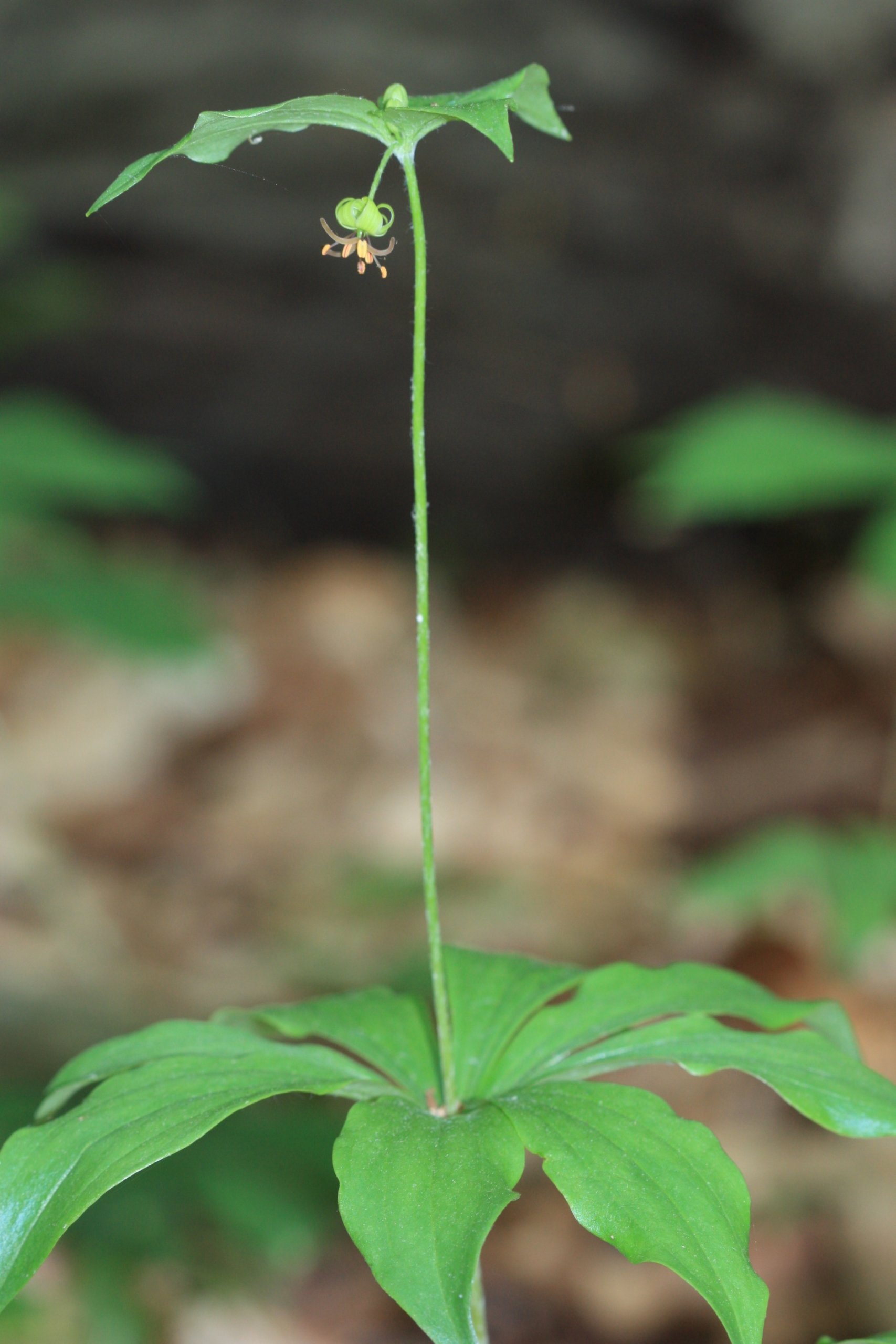Crow’s Nest: The Usual Suspects, Part Two
By Daniel Barringer, Preserve Manager.

Spring is very beautiful this year, perhaps it seems more so because of the situation we find ourselves in. The usual milestones are appearing. On May 1, I heard my first wood thrush, on May 2, my first gray tree frog of the year. I’ve seen several indigo buntings and the usual frenetic nesting activity of spring.

Medeola, or Indian cucumber-root (Medeola virginiana) is finishing its blooming, visible along parts of the Deep Woods trail. It gets its name from Native American use of the root as food and medicine.

Our family went on a couple hikes this week, eventually covering nearly all of Crow’s Nest Preserve and following its trails into French Creek State Park, where we stopped for a picnic lunch at Miller’s Point. All of the photos below are from the Crow’s Nest parts of the hike.

Mayapple (Podophyllum peltatum) is now in bloom. You have to look a bit since the flowers are held underneath the umbrella-like foliage, and only the ones with two leaves bloom (and deer like to eat them as well).

There are showy orchis (Galearis spectabilis) blooming along the Deep Woods and Fox Hill trails…we had a little competition to find the one with the greatest number of blooms.

Bishop’s cap (Mitella diphylla) is also in bloom on these trails in the forest at the south end of the preserve.

Here Owen is holding a branch that blew out of a quaking aspen (Populus tremuloides). This week the cottony seeds are starting to blow around the woods and will line Northside Road with their fluff.

As you leave the southern part of the Deep Woods you look across the valley to Monocacy Hill in the preserve (foreground) and Buzzards Hill in French Creek State Park (background).

Nodding trillium (Trillium cernuum, above) is now in bloom as well.

Today I attended the webinar on native plants that Preserve Manager Erin Smith led (it was excellent; a recording of it should be available next week). She mentioned this triangular bed that Aubrey Smith planted at the visitor center at Crow’s Nest and I wanted to show what this bed looks like right now. The low-growing white-flowered plants are Sedum ternatum, planted there because the bed gets so narrow that anything taller would flop into the path.
Next Friday Natural Lands will be hosting a webinar on managing invasive plants; I hope you’ll join me then!
